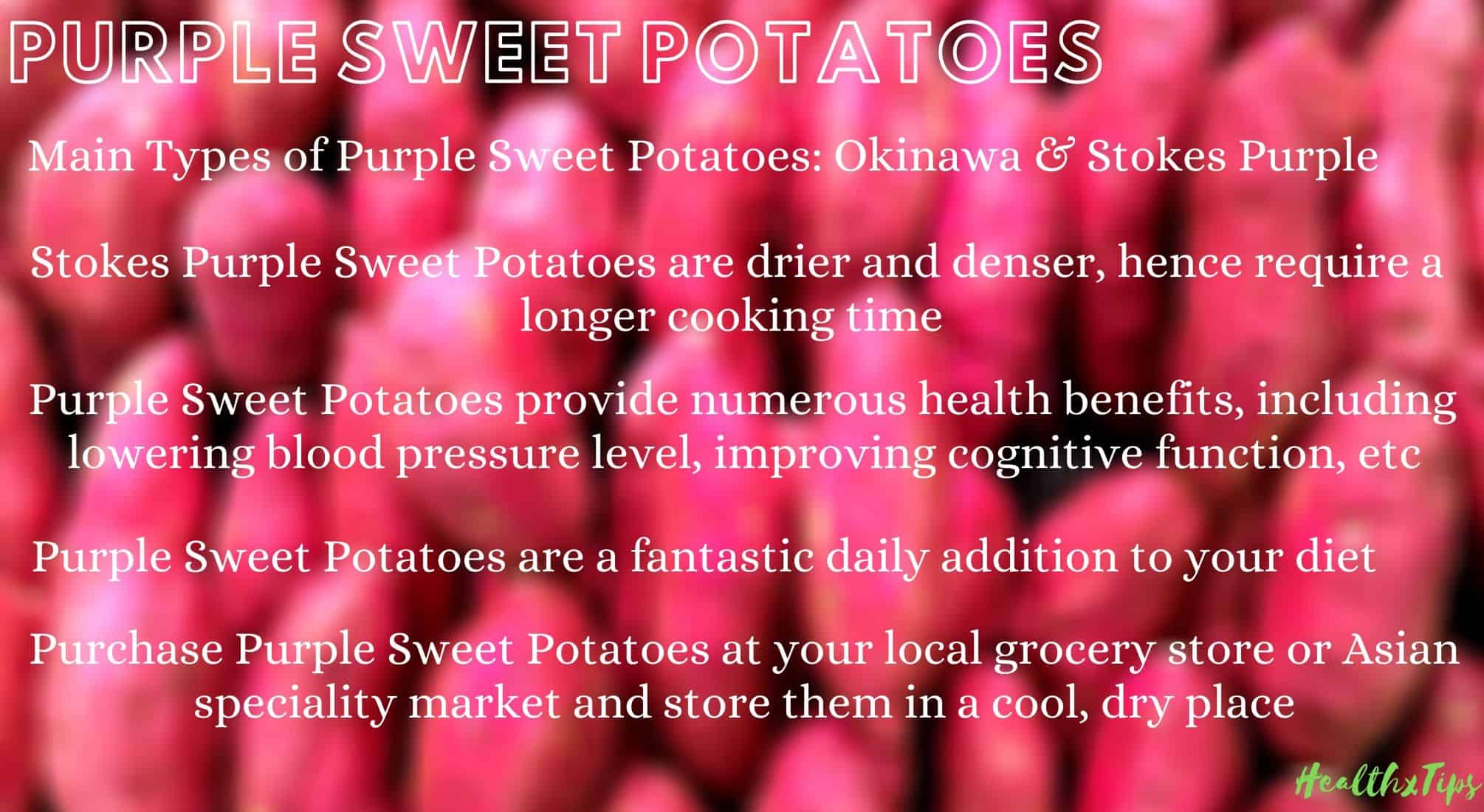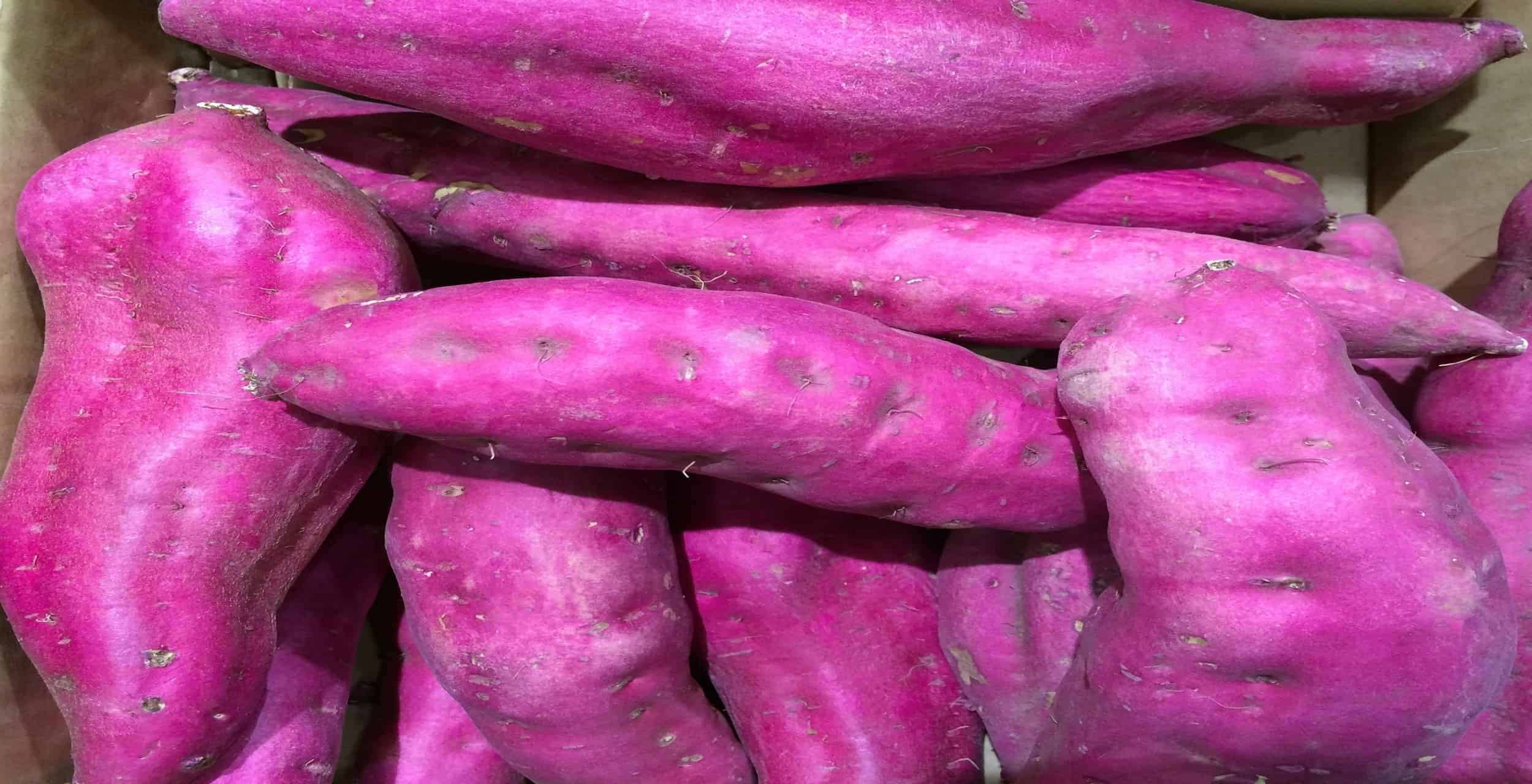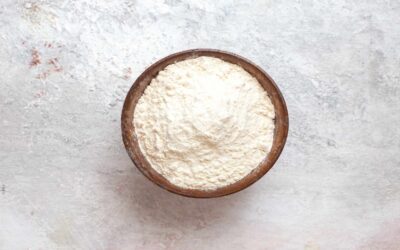Fruits and vegetables come in a dazzling variety of colors, shapes and sizes, examples are the spiky Durian, the Buddha’s Hand, the downright bizarre Horned Melon, to name but a few. Among these, we find an incredible twist on an old classic. Yes! It’s the pink and delicious sweet potato. Sweet potato is perfect for savory stews or baked into a Sunday night casserole. By the way do you know that sweet potato has a flavorsome and eye-popping cousin? You’re right! It’s none other than the purple sweet potato.
Purple sweet potatoes have become available commercially since 2006 and have since proved to be wildly popular, with a remarkable array of accompanying health benefits alongside the lavishly lavender coloring.
Join me in a journey to explore one of the most underappreciated vegetables in nature’s pantry and figure out together “What are purple sweet potatoes and what makes them so great?”
WHAT ARE PURPLE SWEET POTATOES ?

Purple sweet potatoes, like all other sweet potatoes, are a root vegetable which was discovered in the America. As such, they belong to the Ipomoea genus, and can be divided into two main types: Okinawa (white skin) and Stokes (purple skin), with both, having deep, rich purple flesh.
The Stokes Purple is more common than the Okinawa and its existence can be traced back to 2006. In that year, Mike Sizemore, a sweet potato farmer in North Carolina received a gift of unusual lilac potatoes from an unknown woman. He loved them so much that he began to cultivate them and eventually obtaining a patent.
For the Okinawan sweet potato, as its name suggests, harks from Japan, though it originated in Central and South America. When explorers discovered these sweet potatoes, they exported them to the Philippines and China in the fifteenth century, before the potato eventually arrived in Japan in the 1600s. The locals of Okinawa were the first to cultivate them, but in time, they were planted all over Japan. Having already travelled over the Pacific, the Okinawan sweet potato made its way back. Finally, ending up in Hawaii, where it also became known as ‘Hawaiian sweet potato’. The Hawaiians have exported these purple treasures to the United States up till today.
WHAT ARE PURPLE SWEET POTATOES GOOD FOR?
1. Rich in Antioxidants
All sweet potatoes are known to be rich in vitamins and minerals. They are also a fantastic source of fiber. For purple sweet potatoes to stand out in the group, aside from their catchy purple color, they contain the sheer volume of antioxidants, specifically anthocyanins which bring substantial benefits to your health.
One review found that one purple species cultivated in Japan contained more than eight different types of anthocyanins. Dietary intake of anthocyanins can help prevent high blood pressure, improve cholesterol levels and modulate blood sugar metabolism. There are even signs they can stop the growth of breast cancer cells and can prevent colorectal cancer. These chemicals also lower inflammation, with a beneficial effect on general health.
2. Lower Blood Pressure Level

In one study, adults with high blood pressure – a risk factor for heart disease and stroke – were asked to drink 250mL of purple sweet potato juice each day for four weeks. By the end of the trial, systolic blood pressure was significantly lower.
Throughout the trial, no serious adverse events were noted in the participants. There was no measurable change in their blood tests, suggesting that purple sweet potatoes are incredibly safe, even in a concentrated form.
3. Prevent Gout
While in your joints, purple sweet potatoes may help to prevent gout. A study published in Food & Function found that anthocyanins reduced uric acid in mice. High levels of uric acid, lead to crystallisation in the joint, and agonising pain.
4. Improve Cognitive Function

Further research on the brain found that anthocyanins from purple sweet potatoes reduced inflammation, thereby promoting a significant improvement in cognitive performance and memory function. They can even help repair damaged brain tissue after a stroke by regulating the levels of proteins responsible for cell death. These properties were thought to be attributable to the antioxidant effects.
4. Foster Gastrointestinol Health

In your gut, anthocyanins promoted beneficial probiotics that aid with digestion, by acting as food for these healthy gut bacteria. Scientists have long appreciated the importance of healthy gut microbiota, though the public has been much less aware of its significance, widely considering microbes always to be negative. However, the composition of this microbial world living inside you can affect not just your gut health but almost every facet of your body, even including mental health.
5. Additional Health Benefits
The sheer number of benefits is incredible, and also includes, improving symptoms of liver fibrosis, lowering liver inflammation, aiding in diabetes, and helping to prevent bladder cancer. There are even reports that purple sweet potatoes can slow ageing.
ARE PURPLE SWEET POTATOES GOOD FOR WEIGHT LOSS ?

Amazingly, despite being a rich source of vitamins and minerals and having incredible health benefits, sweet potatoes are also a reasonably low source of calories. In an average 5-inch long sweet potato, it contains as little as 112 calories. For the average person, an evening meal is around 700 – 1000 calories, so one or two sweet potatoes per meal is perfectly reasonable.
Additionally, a 2017 study on obese mice, discovered that consuming purple sweet potatoes fostered weight loss and lowered their fat accumulation. Meanwhile, another study found that purple sweet potato anthocyanins aided in the breakdown of fat and the prevention of obesity.
Further research is still required, but the initial findings are looking great. Albeit, if you make purple sweet potato ice cream, it’s still ice cream. So, try to be sensible.
WHERE TO BUY PURPLE SWEET POTATOES ?
Okinawa sweet potatoes can be purchased all-year-round, although depending on your country, you might struggle to find them at your grocery store. Stokes Purple is generally only available from September till June.
If you can’t find them at your primary grocery store, try Asian speciality markets. You’ll most commonly find them sold by the pound, either loose, or in weighed bags. However, if you’re looking to buy in bulk, purple sweet potatoes can be purchased online.
Finally, if you’re struggling to source them, you can always grow your own. You will need a suitable climate, however.
HOW TO COOK PURPLE SWEET POTATOES ?

You can use a purple sweet potato in much the same way you would use any sweet potato. However, be aware, the Stokes purple does have a drier and denser texture, with a more vibrant, wine-like flavour. To truly get the most out of the Stokes Purple, you’ll need to bake it longer than a regular sweet potato: at 350 degrees for around 1 ½ to 2 hours, until it develops a beautiful moist texture.
You can also make colourful mashed potato, soups, and fries, just as you would with most tubers. You can even make ice cream and doughnuts. The only limit is your imagination! However, be careful when baking, as mixing it with baking soda can turn the bright purple flesh into an unappetising green.
Okinawans are common throughout the US and Japan later in the year. They are more similar to their pink or orange counterparts than the Stokes purple, with a sweeter taste and creamier texture. Use just as you would a regular sweet potato.
Few recipes specifically require a purple sweet potato. Still, the Hawaiians make a delicious Haupia pie with a beautiful macadamia nut shortbread base, a purple sweet potato filling, and a final top layer of creamy haupia – a coconut custard. It’s truly delicious!
CAN YOU EAT PURPLE SWEET POTATOES EVERYDAY ?
As we’ve seen, purple sweet potatoes are packed with goodness and are fantastic for your health. These purple beauties are a great source of nutrition without any extra calories. With so many recipes to choose from, you’ll never get tired of adding them into your diet.
However, as with all foods, it is important to get variety: make sure you eat a well-balanced diet, with plenty of vegetables and protein sources. You can eat purple sweet potatoes every day but of course it just can’t be all you eat.
HOW TO STORE PURPLE SWEET POTATOES ?
As compared to regular potatoes, purple sweet potatoes are harder to store, with bruising leading to the entire sweet potato turning bad. Hence, it is of paramount importance to store them in cool, dry, and dark conditions as well as ensuring they have adequate ventilation. Try to use them within a few weeks, or they will go off. Avoid storing in the refrigerator as this can lead to an odd flavour and hard centre.
If cooked, they’ll stay fresh in an airtight container for up to a week, and can also be frozen.
KEY TAKEAWAYS









0 Comments